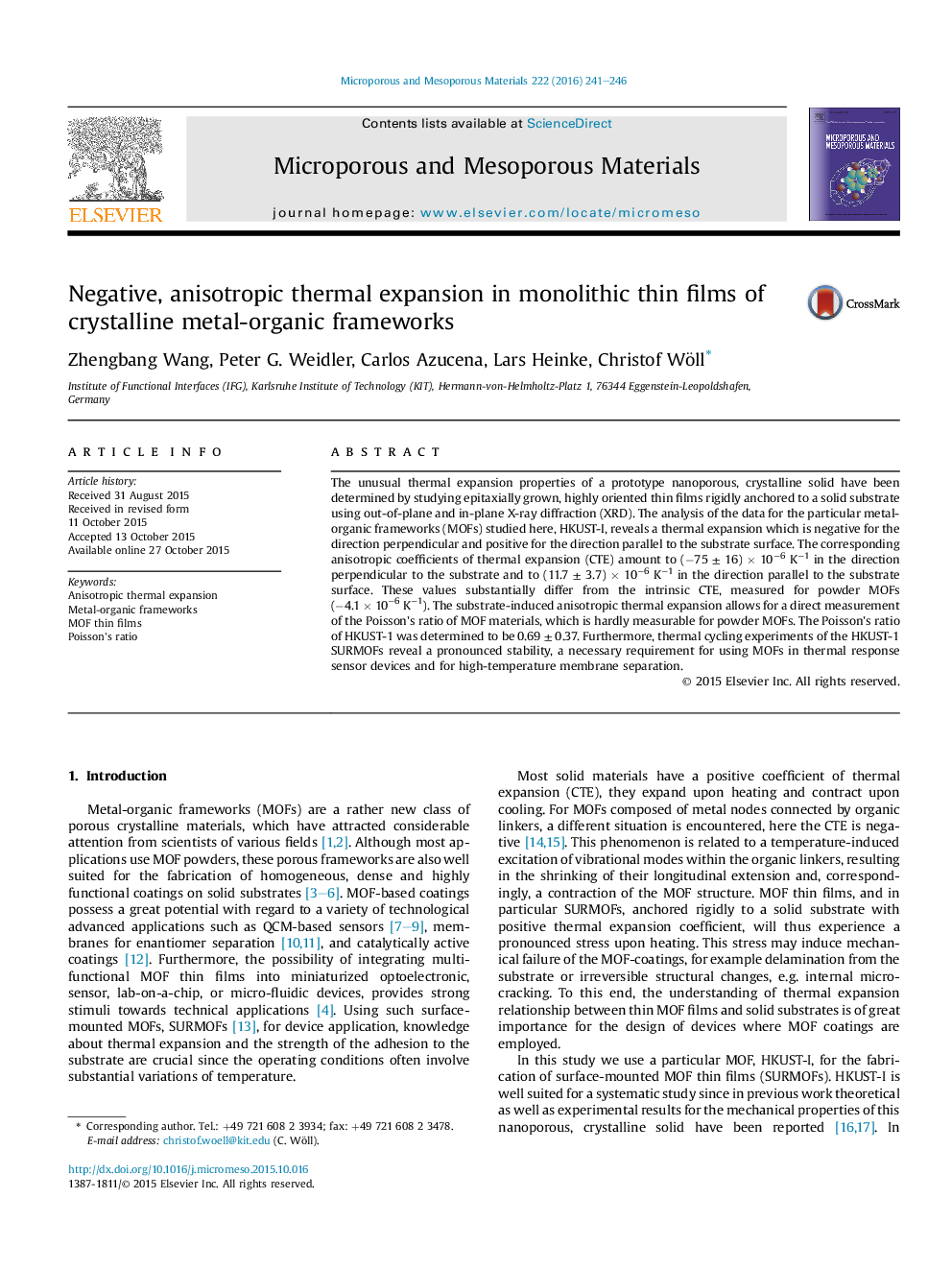| Article ID | Journal | Published Year | Pages | File Type |
|---|---|---|---|---|
| 72054 | Microporous and Mesoporous Materials | 2016 | 6 Pages |
•Oriented and crystalline HKUST-1 MOF thin films were grown on Au-coated Si substrates.•Thermal expansion properties of HKUST-1 MOF thin films were determined.•Thermal expansion in the HKUST-1 thin films was found to be highly anisotropic.•The Poisson's ratio of HKUST-1 was determined to be 0.69 ± 0.37.
The unusual thermal expansion properties of a prototype nanoporous, crystalline solid have been determined by studying epitaxially grown, highly oriented thin films rigidly anchored to a solid substrate using out-of-plane and in-plane X-ray diffraction (XRD). The analysis of the data for the particular metal-organic frameworks (MOFs) studied here, HKUST-I, reveals a thermal expansion which is negative for the direction perpendicular and positive for the direction parallel to the substrate surface. The corresponding anisotropic coefficients of thermal expansion (CTE) amount to (−75 ± 16) × 10−6 K−1 in the direction perpendicular to the substrate and to (11.7 ± 3.7) × 10−6 K−1 in the direction parallel to the substrate surface. These values substantially differ from the intrinsic CTE, measured for powder MOFs (−4.1 × 10−6 K−1). The substrate-induced anisotropic thermal expansion allows for a direct measurement of the Poisson's ratio of MOF materials, which is hardly measurable for powder MOFs. The Poisson's ratio of HKUST-1 was determined to be 0.69 ± 0.37. Furthermore, thermal cycling experiments of the HKUST-1 SURMOFs reveal a pronounced stability, a necessary requirement for using MOFs in thermal response sensor devices and for high-temperature membrane separation.
Graphical abstractFigure optionsDownload full-size imageDownload as PowerPoint slide
